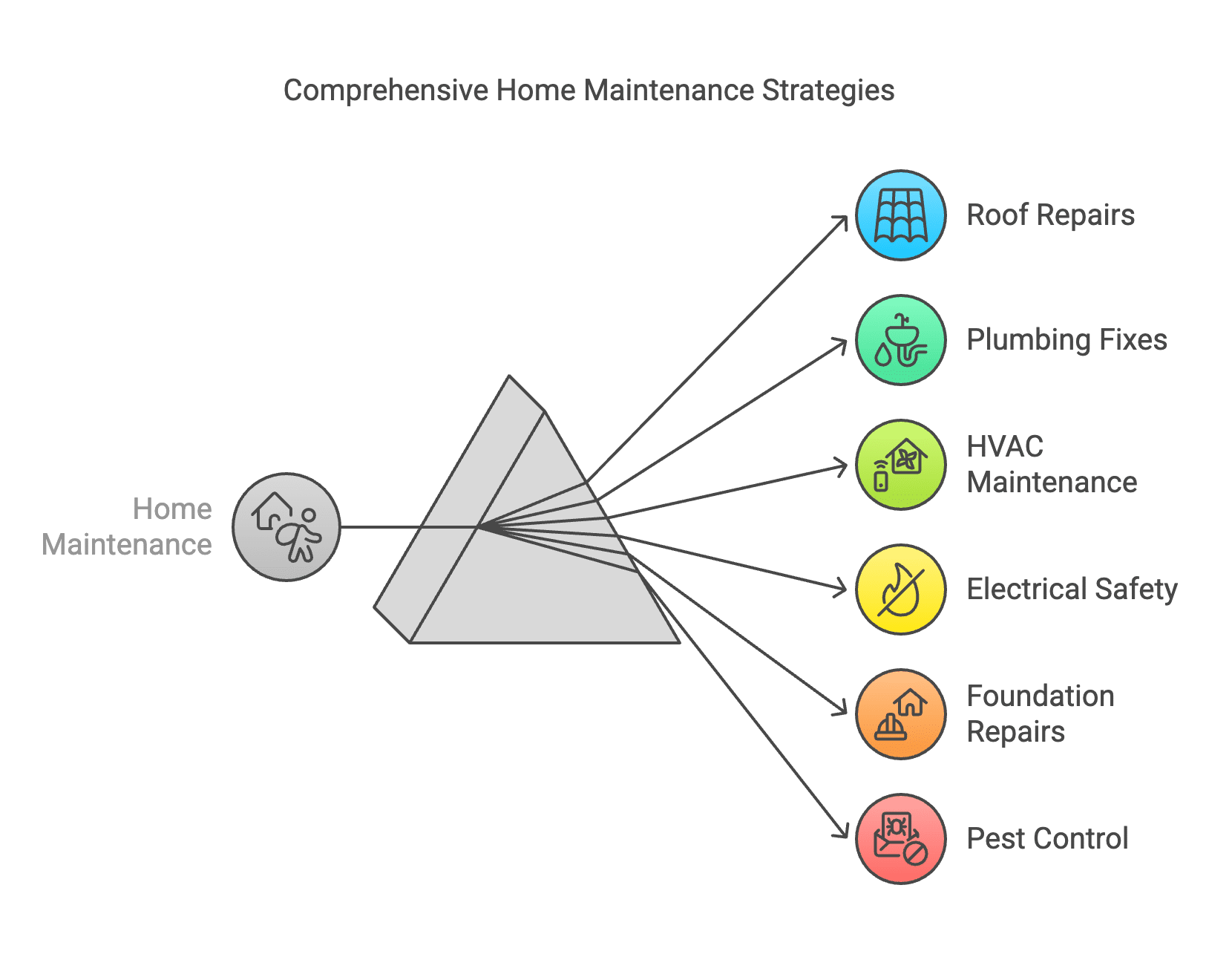Owning a home comes with its fair share of responsibilities, and maintenance is a major one. While it might be tempting to put off certain repairs to save money, neglecting key areas can lead to much bigger, costlier problems down the road. If you’re considering flooring updates, finding a reliable supplier is key. The Top Wholesale Flooring Warehouse in My Area offers affordable options for quality flooring materials that can fit any budget. The good news? You don’t need a huge budget to keep your home in good shape. With smart prioritization and a little DIY spirit, you can tackle essential repairs without breaking the bank. Here are some crucial home maintenance tasks you shouldn’t ignore and how to handle them affordably.
1. Roof Repairs: Preventing Leaks and Costly Damage
Your roof is your home’s first line of defense against the elements; even minor issues can snowball into expensive disasters. Missing shingles, small leaks, or clogged gutters can lead to water damage, mold, and structural issues. Instead of waiting for a major problem, conduct seasonal inspections and address minor concerns immediately. Fixing a few shingles or sealing small leaks with roofing cement is much cheaper than replacing a full roof. If you need professional help, compare quotes and consider off-season repairs when contractors may offer discounts.
2. Plumbing Fixes: Stopping Water Waste and Mold Growth
Leaky faucets, running toilets, and slow drains may seem minor annoyances, but they can significantly increase your water bill and lead to mold or water damage. Many simple plumbing fixes, such as replacing washers, tightening fittings, or using a drain snake, can be done with minimal expense. For bigger issues like hidden leaks, a plumber might be necessary. Catching these problems early can save thousands in potential water damage repairs. If you do end up with a leak, check out the Top Wholesale Flooring Warehouse in My Area for affordable options to help you maintain your home on a budget.
3. HVAC Maintenance: Ensuring Efficiency and Longevity
Your heating, ventilation, and air conditioning (HVAC) system is one of the most expensive parts of your home to repair or replace. Regular maintenance, such as changing air filters, cleaning vents, and checking for leaks, can extend its lifespan and reduce energy costs. If your unit isn’t heating or cooling efficiently, a tune-up from a professional can help optimize its performance. Consider scheduling maintenance in the spring or fall when service rates may be lower.
4. Electrical Safety: Avoiding Fire Hazards
Ignoring electrical issues can lead to dangerous consequences, including fires. Flickering lights, frequently tripped breakers, or warm outlets are all warning signs that shouldn’t be ignored. While minor fixes like replacing a faulty outlet cover or resetting a breaker can be DIY-friendly, a licensed electrician should handle larger electrical concerns. If you’re on a budget, look for community resources that offer low-cost electrical inspections.
5. Foundation and Structural Repairs: Preventing Major Damage
Cracks in your foundation, uneven floors, or doors that don’t close properly may indicate underlying structural issues. While small cracks can often be sealed with affordable epoxy injections, significant foundation problems require professional assessment. To save money, address minor issues as they arise instead of waiting until they become major, costly repairs. If you’re also planning to update your flooring and foundation, visit a flooring warehouse near me for budget-friendly options to help improve your home’s overall condition without breaking the bank.
6. Pest Control: Stopping Infestations Before They Get Expensive
Rodents, termites, and other pests can wreak havoc on your home’s structure, wiring, and insulation. Prevention is the most budget-friendly approach—sealing entry points, fixing leaks, and storing food properly. If you notice signs of an infestation, act fast with DIY treatments or call an exterminator before the problem escalates. Some pest control companies offer free inspections, which can help you determine the severity of the issue without an initial cost.
7. Exterior Maintenance: Protecting Your Home’s Curb Appeal
Your home’s exterior, including siding, paint, and landscaping, plays a role in its longevity and value. Chipped paint and cracked siding can expose your home to moisture and pests, leading to expensive repairs. Power washing, repainting, and filling walkway cracks are cost-effective ways to maintain your home’s exterior. DIY repairs on small areas can save money, but consider getting multiple quotes from contractors for larger projects to find the best deal.
8. Insulation and Weatherproofing: Reducing Energy Bills
Proper insulation and weatherproofing keep your home comfortable and reduce heating and cooling costs. Caulking gaps around windows and doors, adding weather stripping, and insulating your attic can be inexpensive yet effective upgrades. Many utility companies offer rebates or free energy audits to help homeowners improve efficiency on a budget.
9. Appliance Maintenance: Extending the Life of Essentials
Your home’s appliances, from refrigerators to washing machines, work hard daily. Regular maintenance, such as cleaning filters, checking hoses, and defrosting freezers, can prevent costly breakdowns. If an appliance starts acting up, troubleshooting and performing small repairs (like replacing worn-out seals or unclogging drains) can be far cheaper than a full replacement.
10. Smoke and Carbon Monoxide Detectors: A Simple Safety Must
One of the easiest yet most important maintenance tasks is ensuring your smoke and carbon monoxide detectors are working properly. Changing batteries regularly and testing alarms can prevent life-threatening situations. Many fire departments offer free battery replacements or safety checks, making this an easy and budget-friendly task.
Takeaways
Home maintenance doesn’t have to drain your wallet, but ignoring key repairs can lead to significant financial and safety risks. By staying proactive and addressing small problems before they escalate, you can keep your home safe, comfortable, and in great shape—without breaking the bank. Prioritize the most critical repairs, take advantage of DIY solutions, and seek out cost-saving opportunities where possible. Your future self (and your budget) will thank you!








































